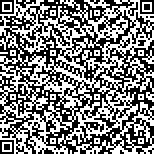| 引用本文: | 王宗志,谢伟杰,王立辉,刘克琳,程亮,王坤.南四湖“三湖两河”洪水演算数值模型优化.湖泊科学,2018,30(5):1458-1470. DOI:10.18307/2018.0527 |
| WANG Zongzhi,XIE Weijie,WANG Lihui,LIU Kelin,CHENG Liang,WANG Kun.Bettering “three-lake and two-river” flood routing model of the Nansi Lake using fourth-order Runge-Kutta numeric method. J. Lake Sci.2018,30(5):1458-1470. DOI:10.18307/2018.0527 |
|
| 本文已被:浏览 6377次 下载 3868次 |

码上扫一扫! |
|
|
| 南四湖“三湖两河”洪水演算数值模型优化 |
|
王宗志1, 谢伟杰1,2, 王立辉2, 刘克琳1, 程亮1, 王坤1,2
|
|
1.南京水利科学研究院水文水资源与水利工程科学国家重点实验室, 南京 210029;2.福州大学, 福州 350002
|
|
| 摘要: |
| 南四湖是中国北方最大的淡水湖泊,由南阳湖、独山湖、昭阳湖和微山湖4个湖区串联而成,地形复杂,洪水易涨难消,与滨湖区涝水交换频繁,建立兼顾效率和精度的洪水演算模型复杂困难.基于1960s提出的用"三湖"和"两河"来概化模拟南四湖洪水的理念与"三湖两河"半图解法洪水演算模型,采用四阶龙格库塔法代替半图解法,改进"三湖两河"洪水演算模型,对比分析计算精度、效率和灵活性,"三湖两河"洪水演算数值解模型优于半图解法;分析了滨湖排水模数、"两河"传播历时等模型经验参数的敏感性,以及韩庄闸水位-流量关系变动对湖泊高水位的影响,据此提出了南四湖洪涝治理的若干建议.南四湖"三湖两河"洪水演算数值解模型可作为南四湖洪水管理的基础工具,因地制宜的建模思路对类似湖库具有重要参考价值. |
| 关键词: 防洪减灾 三湖两河 四阶龙格库塔法 洪水演算 南四湖 |
| DOI:10.18307/2018.0527 |
| 分类号: |
| 基金项目:国家重点研发计划项目(2016YFC0400906)和国家自然科学基金面上项目(51479119,51409169)联合资助. |
|
| Bettering “three-lake and two-river” flood routing model of the Nansi Lake using fourth-order Runge-Kutta numeric method |
|
WANG Zongzhi1, XIE Weijie1,2, WANG Lihui2, LIU Kelin1, CHENG Liang1, WANG Kun1,2
|
|
1.State Key Laboratory of Hydrology-Water Resources and Hydraulic Engineering, Nanjing Hydraulic Research Institute, Nanjing 210029, P. R. China;2.Fuzhou University, Fuzhou 350002, P. R. China
|
| Abstract: |
| The Nansi Lake is the largest freshwater lake of northern China and consists of Nanyang Lake, Dushan Lake, Zhaoyang Lake and Weishan Lake. Because flood of the lake rising up quickly and falling off difficultly and the complex water exchange relationship with waterfront areas, it is difficult to develop a flood routing model with both simulation accuracy and computational efficiency. The paper uses fourth-order Runge-Kutta method to improve the model revolutionarily based on the idea that flood of the Nansi Lake were generalized to "three-lake" and "two-river" in the 1960s and "three-lake and two-river" flood routing model with auxiliary curve method. The comparative results show that the improved flood routing model is superior to the traditional auxiliary curve method in calculating precision, flexibility and efficiency. In addition, the paper analyzes model sensitivity from the empirical parameters such as drainage modulus and propagation time and the effect of stage-discharge relation of Hanzhuang sluice on peak value of water level of these lakes, and then puts forward some suggestions for the treatment of flood control of the Nansi Lake. The improved flood routing model with "three-lake and two-river" of the Nansi Lake can serve as the basic tool for the flood management of the Nansi Lake. The modeling ideas for local conditions can provide important reference value to similar lakes and reservoirs. |
| Key words: Flood control and disaster three-lake and two-river fourth-order Runge-Kutta method flood routing Nansi Lake |